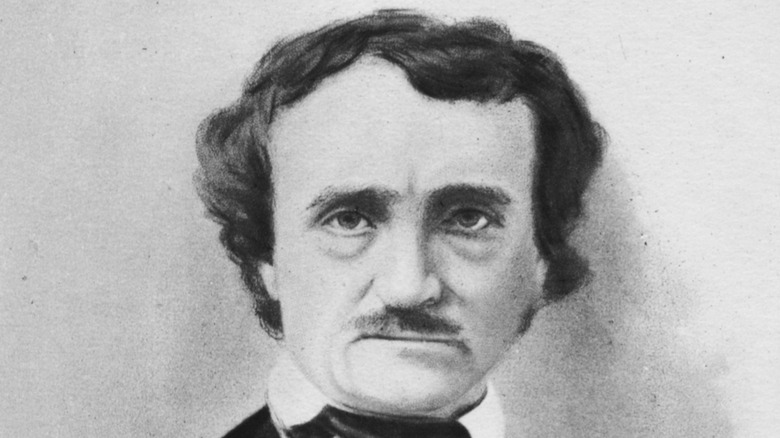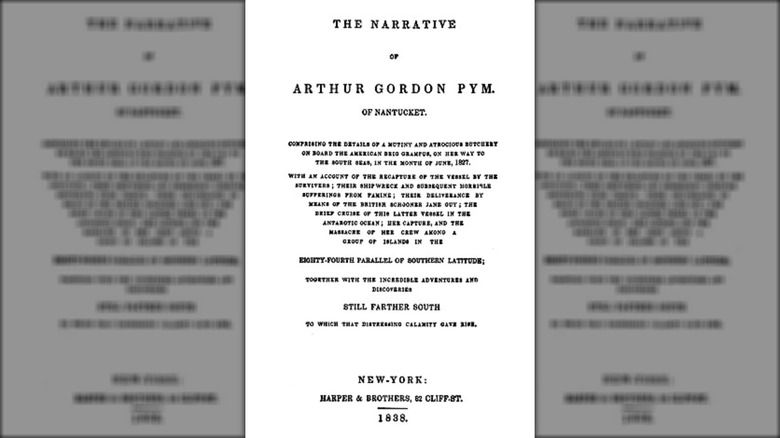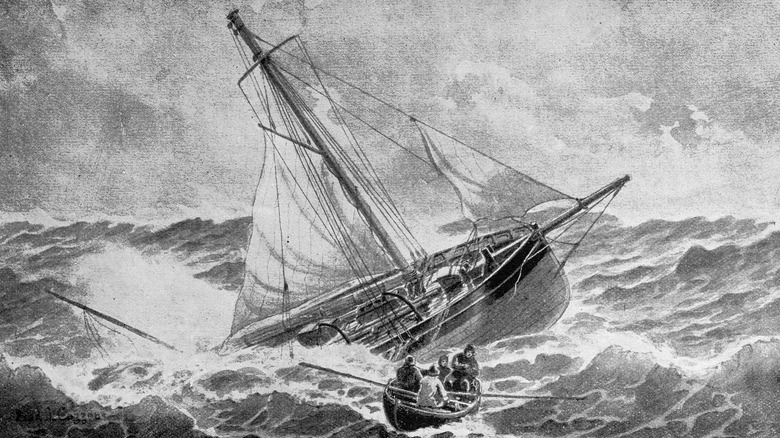The Disturbing Time Edgar Allan Poe Predicted A Real-Life Murder
There are many qualities that great writers bring to their work. Some form sentences so beautiful they stay in their readers' heads for a lifetime. Others have mastered the art of keeping people gripped with their stories. However, there is a special form of reverence for writers of vision and foresight, particularly those who seem to offer a glimpse into the future of humanity. The British novelist George Orwell's "Nineteen Eighty-Four," published in 1949, has been held up as an astute warning about where Western society was headed at the end of the 20th century. Elsewhere, some of the most acclaimed early American poets, such as Walt Whitman and Hart Crane, were said to write in a visionary mode.
But can writers ever really see the future? Believers might point to the French prophet Nostradamus, whose chilling predictions have compelled people for hundreds of years. On the other hand, critics would claim that the astrologer's verses are so cryptic that it is possible to read anything into them. However, there is one classic writer, still popular today, who seemed to have the ability to forecast future events with uncanny accuracy: Edgar Allan Poe.
Known as the master of the macabre thanks to classic works such as his Charles Dickens-inspired poem "The Raven," he remains one of America's favorite writers. In the 1970s, more than a century after his tragic death, some came to the disturbing conclusion that as well as writing about the supernatural, Poe himself was tied to the otherworldly by his ability to predict murder. The strange claim concerning his foresight focuses on his 1838 novel, "The Narrative of Arthur Gordon Pym of Nantucket."
The Narrative of Arthur Gordon Pym of Nantucket
Though Edgar Allan Poe is arguably better known today for his short works, "Pym of Nantucket" is one of the central pieces in his oeuvre. Ostensibly a seafaring adventure story, his innate understanding of psychology and use of Biblical symbolism and allegory elevated the work. Indeed, it became highly influential on countless major writers that came after, from Herman Melville — who drew from it in writing "Moby-Dick" — to Sigmund Freud, for whom it demonstrated aspects of what he would later call psychoanalysis.
The story tells the tale of the titular Pym, a stowaway on a whaling ship. Over the course of the gripping tale, Pym and the crew face a barrage of existential threats, including mutiny, storms, shark-infested waters, and shipwreck. Like much of Poe's work, "Pym of Nantucket" also contains supernatural elements, specifically a horrifying ghost ship covered in corpses. But for many readers, the most bloodcurdling episode of the novel happens after the crew has been shipwrecked, when, having run out of food, they have to resort to cannibalism to survive.
Uncanny similarities to a true case
The cannibalism scene of "The Narrative of Arthur Gordon Pym of Nantucket" takes place when the title character is shipwrecked. Three other survivors are by his side: Augustus Barnard (who was responsible for stowing Pym aboard), Dirk Peters, and Richard Parker, the last of which first broached the subject of one person becoming a human sacrifice so that the others might survive. Though Pym initially resists the idea, he gets no support from either Peters or Barnard, and they draw straws, with Parker ironically being the one to lose his life. Barnard, exhausted, dies shortly after.
Here's where things get weird. In the 1970s, "Darkness at Noon" novelist Arthur Koestler, who was interested in the paranormal, put out an open call requesting any unexplainable coincidences that people had experienced. One correspondence he received was from a man named Nigel Parker, who described how his cousin had died by cannibalism nearby half a century after the publication of "Pym of Nantucket," in close to identical circumstances on the English ship Mignonette in 1884. The cousin's name? Richard Parker.
Poe's visionary predictions
Skeptics would surely argue it is pure coincidence that Edgar Allan Poe appeared to predict the death by cannibalism of a man named Richard Parker half a century before it occurred. Indeed, there were several prominent shipwrecks in the 19th century that ended in cannibalism, and the case of the Mignonette was the only one that happened to contain a victim named Richard Parker.
However, Poe's reputation as a writer of unnatural insight is not entirely unwarranted. In the world of science, the macabre writer proved himself to be something of a visionary whose fiction sometimes prefigured notable medical cases and experts' understanding of them. In 1840, Poe wrote a short story named "The Business Man," in which a man suffers a traumatic brain injury that changes his personality. According to New Scientist, the story was written eight years prior to the case in which a railroad worker suffered a similar trauma, and the same disturbing symptoms. At the time, brain injuries were not well understood, and Poe had a remarkable grasp of what is now known as frontal lobe syndrome.
Elsewhere, Poe's prose poem "Eureka" has been identified as being ahead of the curve in the field of cosmology. Though little appreciated upon its publication in 1848, experts have since noted the writer's incredibly uncanny outlining of a conception of the universe that bears a striking resemblance to the Big Bang. Such theories only emerged in mainstream cosmology many decades after Poe's work.



